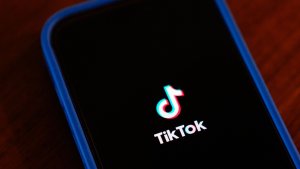How To Use TikTok To Tell A Brand Story
Like it or not, TikTok is taking over, here's how brands can take advantage.

TikTok is trumping its rival social platforms. Its capabilities in making user-generated content educational, funny, and now shoppable, have turned it into a powerful marketing tool for brands to reach new audiences in digital environments.
In fact, the platform has become so influential that audiences are even using it to bypass search engines. With an established audience of millennials and Gen Zs, and its appeal to older cohorts quickly growing, new-to-market brands across a broad brush of categories are well positioned to use it as a way to build awareness, loyalty, and boost sales.
First, tell your brand story with short-form content
The attention economy is shrinking - fast. Research highlights that only 24% of audiences get past the first 15 seconds of a video on non-TV platforms. And brands that are less familiar within their categories - and therefore deemed less reliable - are likely to fare worse here.
Emerging brands are therefore under pressure to build content that quickly engages audiences and builds their reputation, and TikTok is their best shot at this: 42% of users say they’re paying full attention to videos on TikTok, compared to just 33% across other platforms.
Its clever short-form content, complete with Augmented Reality filters, sound effects and hashtags, is a shortcut to promoting a tone of voice, ethos and story behind the brand. For example, fitness brand Gymshark posts gym-related content to engage key audiences that come to TikTok for humour.
Brands can copy this approach while balancing it with ‘behind the scenes’ insights; offering branded content that consumers won’t find anywhere else.
Emerging brands should also take advantage of ‘trendjacking’: adding their voice to a big cultural moment or calendar date as a way to boost relevance. Take ice cream brand Little Moons, which went accidentally viral when creators filmed themselves on treasure-hunt style visits for the product at Tesco, and led to a 700% sales increase. The brand has since responded to this by sharing content related to Tesco restocking the product on its own page.
Now brands won’t always go ‘accidentally viral’, but this doesn’t mean they shouldn’t be part of the conversation that their audiences are talking about. Relying solely on product-led content risks stunting growth, so adding a voice to what consumers are engaging with and relate to, while still telling a brand story and sharing values, is a win-win approach.
How to make product-led content effective
TikTok is an opportunity for products to reach new audiences at a lower cost than store shelves, but the platform shouldn’t be treated like a traditional marketplace.
Audiences have flocked to TikTok because it's an entertainment and discovery platform, so the rule of thumb here for brands is to stay authentic. Sharing content that’s genuinely useful, such as product reviews and tutorials, will encourage audiences to visit their pages, watch content, and in turn get brands onto the same feeds as their more established competitors.
But as a first port of call, brands should tap into the power of the creator economy. Creators already have an established loyal following - and by partnering with those who share similar values to build content, new-to-market brands can build trust and credibility with new audiences.
Tools such as TikTok’s Affiliator Programme offer a fast track to identifying creators that already have a relevant following.
How to build live shopping into your TikTok strategy
Once brands have built an organic following on their pages, they can start to integrate purchase functions through TikTok Shop. Meshing engaging content that leads to brand discovery with ‘buy now’ widgets is a sure-fire way to drive sales, with half of Gen-Z consumers having made a purchase after discovering it on TikTok.
Live shopping is a prime example here. It’s already a well-established medium in Asian markets, especially prolific on big shopping days like Singles Day. And although recent reports suggest that it’s been slow to take off in the West, live commerce is expected to be worth $35 billion in the U.S. by 2025.
Live shopping offers an opportunity for brands to speak with audiences in real time and encourage impulse purchases, but it can’t be an off-the-cuff event. Teasing it with creators, new product launches and promises of flash sales are fundamental to ensuring that audiences participate.
For example, Nyx Cosmetics’ recent ‘worth the hype’ livestream, which showcased its most viral products, was promoted with a countdown through short-form content and highlighted the opportunity for viewers to win products.
TikTok is a unique opportunity for emerging brands to be seen by the same eyeballs as legacy competitors. But winning on the platform means a dedicated team to create a consistent stream of content that gets on the bandwagon of trends, as well as curating a brand story and regularly partnering with creators with relevant followings so that the algorithm works in their favour.
Once brands have an established profile and a healthy following, investing in TikTok’s unique commerce capabilities - such as live shopping - to simplify purchase journeys after initial discovery will see profits quickly surge.
Peter Martin, MD at digital commerce agency SMP
Thanks for signing up to Minutehack alerts.
Brilliant editorials heading your way soon.
Okay, Thanks!
